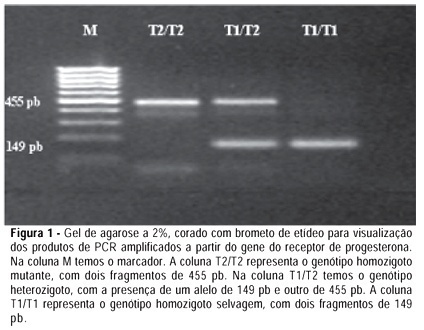Revista Brasileira de Ginecologia e Obstetrícia. 2006;28(5):278-284

PURPOSE: to analyze race, parity and presence of the progesterone receptor polymorphism, named PROGINS, as factors related to uterine leiomyoma occurrence in Brazilian women. METHODS: we carried out a case-control study, composed of 122 patients with the diagnosis of uterine fibroid and 125 women without the disease. After recording the clinical data, we collected biological material for DNA extraction, polymerase chain reaction and agarose gel electrophoresis in order to identify the presence of PROGINS polymorphism. Statistical analysis was performed using the non-parametric Mann-Whitney test or the chi2 test, depending on the studied variable. The risk for the occurrence of the disease was calculated by the logistic regression model, providing the odds ratio (OR). The adopted significance level was 5% (p<0.05) and the confidence interval was 95% (95% CI). RESULTS: we observed a higher prevalence of "non-white"women - mulatto and black - (50 vs 22.4%) and nulliparas (23.8 vs 11.2%) in the cases, while the progesterone receptor genotype was more often PROGINS positive - heterozygous or mutant homozygous - among the controls (21.6 vs 10.7%). The OR indicated an elevated risk for leiomyoma related to the "non-white"race (OR=3.46; 95% CI: 2.0-6.0) and the nulliparity (OR=3.30; 95% CI: 1.9-5.6), with reduction in the presence of PROGINS-positive genotypes (OR=0.43; 95% CI: 0.2-0.9). CONCLUSIONS: the "non-white"race and nulliparity were considered risk factors for the occurrence of uterine fibroid in the studied population, while PROGINS polymorphism showed to be a protective factor.
Search
Search in:


Comments